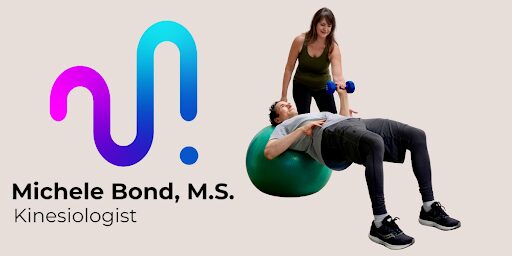In the age of Instagram fitness influencers and flashy workout trends, it’s easy to get caught up in the hype of complex, high-intensity exercise routines. But according to Michele Bond, M.S., a renowned Kinesiologist and fascia expert, the key to optimal health and performance may be simpler than you think.
“Functional training is often misunderstood,” says Bond. “Many people think it’s about doing exercises that mimic daily activities, but it’s so much more than that. True functional training is about optimizing the way your body moves and functions as a whole.”
At its core, functional training is a holistic approach to exercise that emphasizes the development of strength, stability, and mobility in a way that translates to real-world activities. Rather than isolating individual muscles or focusing on aesthetic goals, functional training aims to improve the overall efficiency and effectiveness of your movement patterns.
“The human body is designed to move in integrated, multi-planar ways,” explains Bond. “When we train in a functional manner, we are training in a way that calls upon certain muscles to work together that are actually supposed to work together to produce a certain movement.. This not only helps us perform better in our daily lives but also reduces our risk of injury and chronic pain.”
One of the key principles of functional training is the concept of “proximal stability for distal mobility.” In simple terms, this means that in order to generate powerful, precise movements in your extremities (like throwing a ball or swinging a golf club), you need a stable foundation in your core and hips.
“Many people focus on training their arms and legs without paying attention to the underlying stability and control required to use those limbs effectively,” notes Bond. “But functional training prioritizes core strength, hip function, and muscle chain activation to train the body to produce optimal movement.”
Functional training exercises often involve compound, multi-joint movements that challenge your body to work as a coordinated unit. Some examples include squats, lunges, deadlifts, push-ups, and rows. These exercises recruit multiple muscle groups simultaneously, improve joint stability, and enhance overall body awareness and control.
Another key aspect of functional training is the use of three-dimensional, multi-planar movements. “Most traditional gym exercises occur in a single plane of motion, usually the sagittal plane (forward and backward),” says Bond. “But in real life, we move in all three planes: sagittal, frontal (side-to-side), and transverse (rotational). Functional training incorporates exercises that challenge us to move in all three planes, which better prepares us for the varied demands of daily life.”
Some examples of multi-planar functional exercises include lateral lunges, rotational medicine ball throws, and single-leg balance drills. These exercises challenge your body to stabilize and generate force in multiple directions, improving your overall balance, coordination, and agility.
But functional training isn’t just about the exercises themselves; it’s also about the way you perform them. “Quality of movement is far more important than quantity,” emphasizes Bond. “It’s better to do a few reps with excellent form and control than to rush through a high volume of sloppy, uncoordinated movements. This is how the nervous system improves as well
This emphasis on quality over quantity is particularly important for those new to exercise or recovering from injury. “When you’re just starting out or coming back from a setback, it’s crucial to build a strong foundation of proper movement mechanics,” says Bond. “Rushing into advanced exercises or high-intensity routines without first mastering the basics can lead to frustration, burnout, and even further injury.”
By focusing on functional training principles, you can develop a strong, resilient body that moves with ease and efficiency. Whether you’re a competitive athlete looking to optimize your performance or a busy professional looking to maintain your health and independence, functional training can help you achieve your goals in a safe, sustainable way.
Ready to experience the power of functional training for yourself? Visit www.michelebond.com and sign up for the mailing list to stay informed about Michele Bond’s upcoming online training and community launching in early 2025. As a leading expert in Kinesiology and fascia, Bond can help you optimize your movement, improve your function, and achieve your fitness goals with her cutting-edge approach to functional training.




